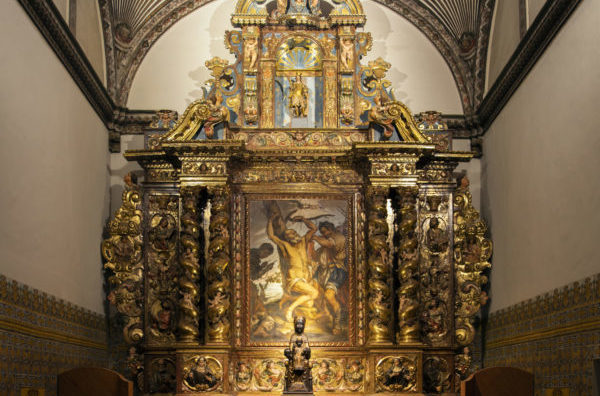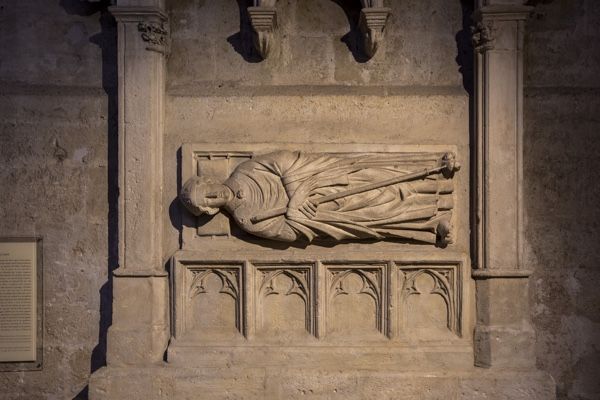Art Heritage of the Church
The temple of the Monastery of Sant Cugat features artistic and cultural elements from different periods throughout its long history, many of which boast great heritage value. Here is a selection.

The virgin of the forest
Romanesque sculpture, probably from the 12th century, located on the left apse or apse of Saint Mary. It comes from the shrine of Santa Maria de Gausac, former property of the Monastery located in Collserola.
Baroque Chapels
A major modification was carried out in the late 17th and early 18th centuries in the fourth nave of the church, whose single space was divided into three baroque chapels separated by narrow sacristies. Its design involved the construction of new vaults, approximately two metres lower than the original Gothic ones. To bear the load, they were built as timbrel vaults, with a triple tiled layer. Moreover, the chapel beneath the organ was also reformed.
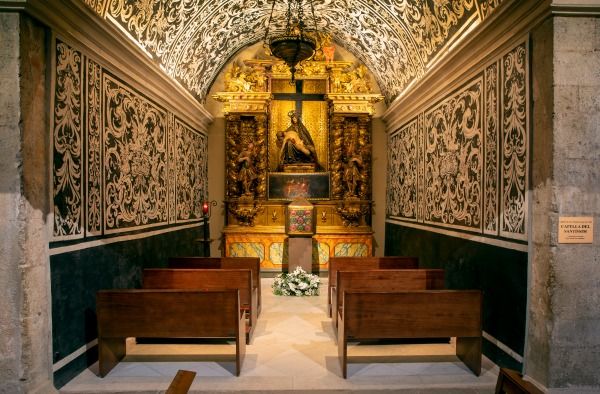
Chapel of Merci
he chapel is built within the body of the bell tower. Originally dedicated to Saint John the Baptist, in the 16th century it was divided into two levels to house the organ in the upper level. In 1706 it was reformed to dedicate it to the Virgin of Mercy.
Chapel of Saint Bartholomew
This chapel, in which the craftsmanship of the altarpiece by Master Francesc Santacruz and the pictorial image of Saint Bartholomew by Master Miquel March stand out, is one of the most important baroque spaces in the Monastery: it features elements characteristic of this style …
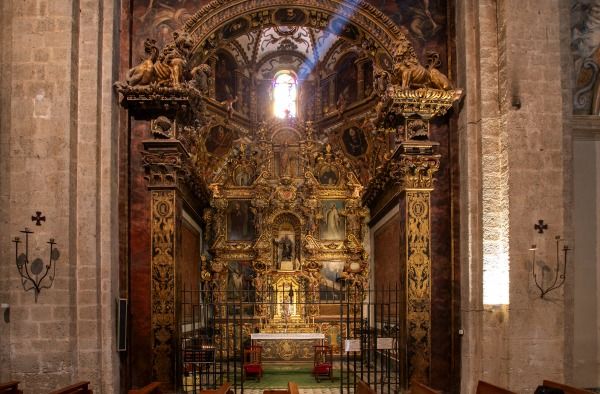
Chapel of Saint Benedict
This chapel is in the centre of the fourth nave of the temple, separated from the two neighbouring chapels by narrow sacristies. An altar dedicated to Saint Benedict, the founder of the monastic order of Sant Cugat, was already documented in 1221. The chapel, profusely decorated, is one of the best examples of Catalan baroque style.
Legend of the Rooster weather vane
The Chapel of Saint Benedict preserves one of the most emblematic pieces of art in the Monastery. It is a medieval metal weather vane in the shape of a rooster. Originally it was located above the dome, but today it is held in the chapel to recall a well-known legend of the Monastery, according to which this rooster sang …

Baptismal Fount
The chapel of Saint Scholastica houses a beautiful baptismal font from the parish of Sant Pere d’Octavià. It is a 16th century Renaissance sculptural piece, probably made in Girona.
Renaissance Altarpieces
The second half of the 16th century was a period of relative prosperity for the peasants of the village, which, of course, also improved the Monastery’s income, mainly its share of crop yields. Thus, a series of improvement works inside the church began, including two altarpieces that are still preserved: the altarpiece of Saint Michael – originally located on the right apse – and the altarpiece of the Rosary – originally set on the left apse –. The two pieces are good examples of the new art practices of that time, in which the façades of religious architecture inspired the distribution of the altarpieces, in which we find columns, pilasters or pediments.
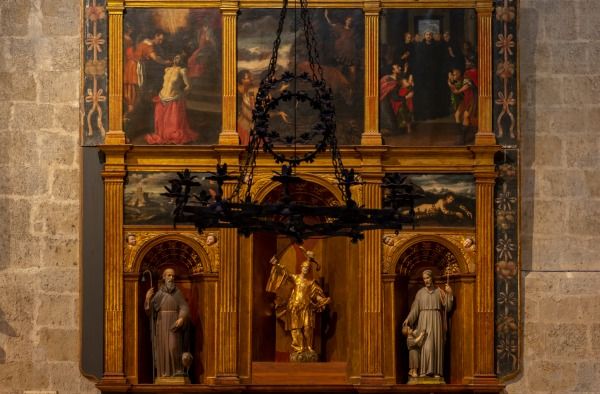
Altarpiece of Saint Michael
The northern wall of the church houses a Renaissance altarpiece dedicated to the archangel Saint Michael. The altarpiece comprises a predella, two floors and an attic, divided into three streets separated by austere pilasters. The central space of the first floor is wholly occupied by a niche that houses a golden baroque sculpture representing Saint Michael and that replaced the original Renaissance sculpture, which was probably bigger
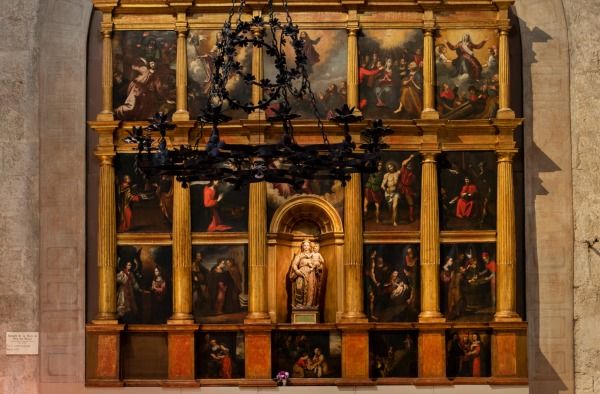
Altarpiece of the Rosary
This piece replaces the Romanesque elements that hitherto had presided the left apse or apse of Saint Mary. We know that the carpentry work began in 1583. It was more ambitious than that of Saint Michael and is divided into five streets, two floors and an attic. The dedication to the Virgin of the Rosary was popularised in the 16th century under the guidance of the Dominicans and substituted the old Catalan tradition of the Virgin of the Rosebush.
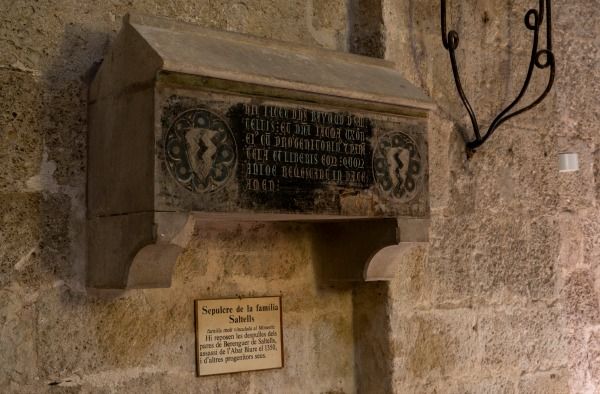
Tomb of Raimon de Saltells
On the northern wall of the church we find the tomb of the Saltells family, nobles from Cerdanyola who remain forever linked to the history and legend of the Monastery.
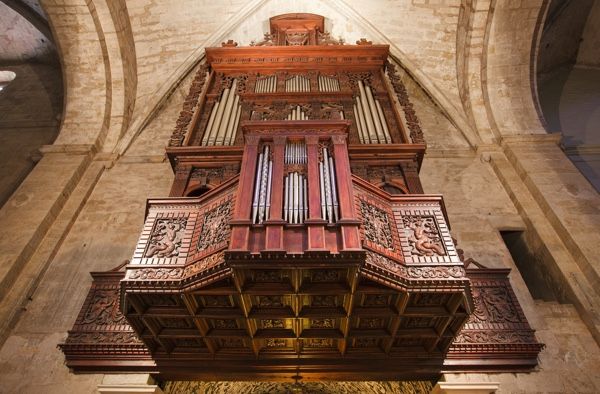
Organ
Music has always been a key element in the monastic liturgical services and there has probably been an organ since ancient times. The current one is on the southern side of the transept, above the Chapel of Mercy. The instrument’s casing is a good example of Renaissance wood carving.

